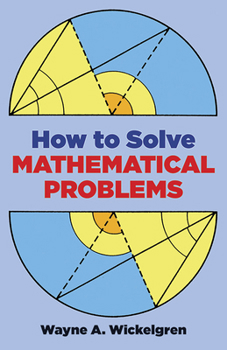How to Solve Mathematical Problems
Select Format
Select Condition 
Book Overview
If you've ever tried to solve mathematical problems without any idea how to go about it, this book is for you. It will improve your ability to solve all kinds of mathematical problems whether in mathematics, science, engineering, business, or purely recreational mathematical problems (puzzles, games, etc.).
In the pages of this book you'll discover seven indispensable problem-solving techniques: inference, classification of action sequences, state evaluation and hill climbing, subgoals, contradiction, working backward and relations between problems. Based on modern advances in the fields of artificial intelligence and computer simulation of thought, the techniques are taught here by an effective problem-solving methodology. Dr. Wickelgren, formerly a Professor of Psychology at MIT and the University of Oregon, first defines a problem-solving method, then illustrates its application to simple recreational mathematics problems that require no more background than a year of high school algebra and a year of plane geometry. By devoting the majority of the book to such "puzzle" problems, which require less background and information than more advanced mathematics and science problems, the author reaches the widest possible audience. In the final chapter, however, Dr. Wickelgren deals with specific problems from mathematics, science, and engineering. Throughout the book, sample problems illustrate each method and the author has supplied hints and complete solutions.
Carefully and clearly written, this indispensable guide will help students in every discipline avoid countless hours of frustration and wasted effort. It is an ideal book for early undergraduate courses in mathematics, physical science, engineering, computer science, economics and other fields that require problem solving. Preface. Introduction. References.Index. 73 line illustrations.






